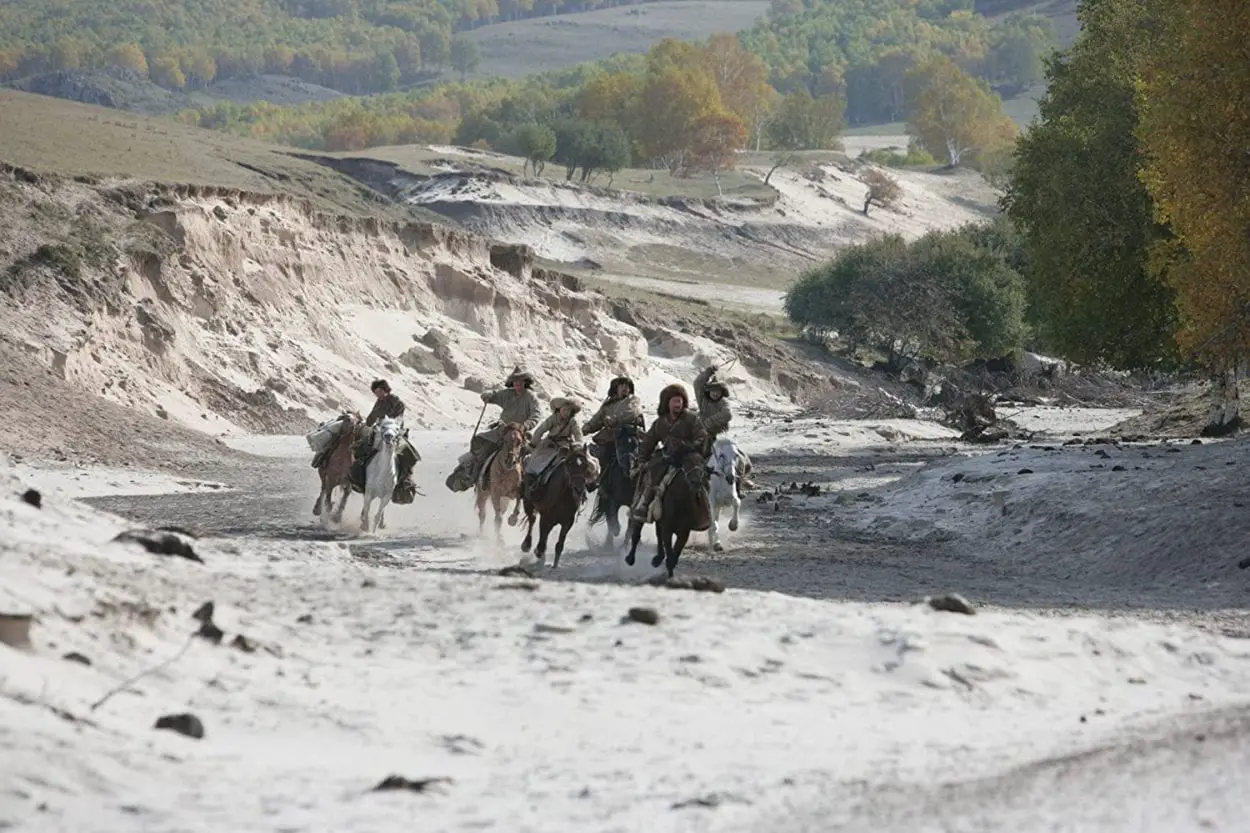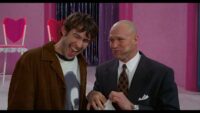I have always loved films of an epic nature: the swords and saddles of yesteryear, and the brutal up-close combat of more recent memory. These are the types of movies that I’ve sought out for as long as I can remember. As I got older I started to look a little further afield than the usual Hollywood epic affair. On my journey, I happened upon the 2007 film Mongol, a semi-historical recounting of the origin of Genghis Khan. When one seeks the epicness of global cinema then there is no story more epic than the tale of how a poor boy known as Temudjin would go on to conquer all, becoming one of the most infamous rulers in history.
The story at the center of Mongol is the rise to power of Genghis Khan (Tadanobu Asano.) It traverses many years of his life from childhood to the beginning of his rule as the Khan of all Mongolia. From the off, the viewer is made readily aware of the scale of not just this movie but also the world that these characters call home. The director Sergei Bodrov does an excellent job of conveying the vastness of the Mongolian Steppes. The way the cinematography is paired with the beautiful yet haunting score gives the landscape an otherworldly feel.

The Tuvan throat singing is mesmeric and yet unsettling at the same time; this world is as beautiful as it is fraught with danger. The sprawling steppes, the never-ending hills conceal the threats that lay just over the seemingly endless horizon. This world is truly stunning but to survive it one has to use cunning. Every moment of happiness seems so fleeting; the nomadic lifestyle of the Mongols was brutal and uncompromising. We see an excellent example of this after Temudjin’s father dies, the Khan who was poisoned falls from his horse, and then his former allies set about plundering all that was his.
Although this scene is ruthless and shows the temporariness of this kind of life there is something else on show here. The code that these brutal warriors lived by was one they seem to adhere to very strictly. Targutai (Amadu Mamadakov) refuses to kill the young Temudjin (Odnyam Odsuren), as it was against their beliefs to kill children. It is a very striking moment. Whether or not it was an actual custom of the Mongols is another thing altogether. What it does show us is the juxtaposition of warrior cultures. On the one hand, they can be brutal savages, but on the other hand, they often tend to have a very rigid code of conduct. It harkens back to what Omar said in The Wire, “A man must have a code”.
After everything that he knows is taken away from him, we see the chain of events that eventually create the man who Temudjin would later become. He lives his life on the run, meeting different people along the way; each person is a building block. The young boy, then a young man lives life with a knife as his throat. His story is a personal example of all the dangers that fill the world. Temudjin is hunted, rode down, and imprisoned on more than one occasion.

His life is a seesaw of power and struggle, a perfect microcosm of the human experience of any age. The ebb and flow of life on a monumental scale. Maybe it is a curse of greatness that the valleys have to be equal in their depths as the peaks in their loftiness. We watch him go from slave to Khan, from having nothing to having it all. No matter the end results of his conquest the story contained within Mongol is a powerful one nonetheless.
There is something that we can all say we want, to fulfill a destiny that we conceived long ago. To build it up from scratch. To try and shape the world and remake it in our own image. It is why these movies often focus on legacy, it is an innate human want. Our legacy is our immortality. For some this is the overriding need, their reason for being. They thirst for nothing else but control and power but in the end, they become controlled by their thirst for power. As they say, absolute power corrupts absolutely, which often leads to death on an ungodly scale.
We don’t see this in Mongol as such but what we do see is the planting of the seeds for what is to come. Given that this was supposed to be the first part of a trilogy it is no coincidence that there is much left off the table here. The battle scenes, for the most part, are skirmishes but as the story unfolds the battles get bigger and bolder. I think this was a very enticing starter to what would have been an awe-inspiring main course; which one would imagine would have broadened not only the subject matter of the narrative but also its scope and scale.

Although Mongol is pretty accurate in its depiction of Temudjin’s life, there are a few historical incongruities. He was never enslaved by the Tangut, and also in Mongol the dialect that the Tangut use is Mandarin which is not their native tongue. The use of Mandarin might have been due to two things, the shooting location of Mongol—much of it was filmed in China—and the fact that the Tangut dialect is almost a dead language. It is actually going through a state of linguistic reconstruction to this day.
Alterations like this played a factor in the shooting location for Mongol not actually taken place in Mongolia; much of it was shot in China, Inner Mongolia, and Kazhakstan. Although these changes to historical facts can’t be ignored they do not, however, take away from the story. Many dramatic recountings of historical events take liberties as there are often many blanks to fill in. This is a style that many creators have taken over the years. It is rife within Michael Hirst’s Vikings. Just like Mongol, a layer of poetry and rhythmic beauty is applied to the savage truth.
We have to remember they are artists painting a portrait; an artistic interpretation of the historical facts. Even though we see the brush strokes from time to time they paint an incredibly real and vivid picture of what life was like back then. They do what all creators do, they give us an idea, a semblance of existence during the creation of the civilized world; albeit not by very civilized means. They give us a picture in our mind’s eye that allows us to have a better understanding of things that are beyond our modernistic comprehension.
Both Bodrov and later Hirst build their respective worlds up brick by brick. They breathe life into stories that were long since dead. It is an incredibly important service that creators like this provide, they reawaken the primal in us by reimagining these forgotten tales. They are cinematic historians, telling us mythical and somehow also incredibly real tales of people who are so much larger than life. They put flesh on top of ancient bones, recreating them like archaeological auteurs, and few do a better job at breathing that said life into a legendary character as Bodrov did with Genghis Khan’s story in Mongol.




